This St. Patrick's Day, defy convention and celebrate snakes
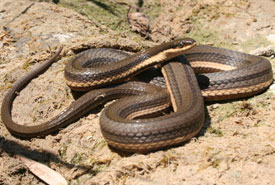
Queen snake (Photo by Joe Crowley)
For many of us, Saint Patrick is known as the protector of the rolling hills of Ireland. Every year, people around the world join in celebrating his legendary story.
The green beer, shamrocks and other verdant regalia synonymous with St. Paddy’s Day are actually meant to celebrate the story of St. Patrick. Folklore has it that after 40 days of fasting and wearing a garment of green, he drove the snakes out of Ireland and chased them into the sea.
To this day, the grassy landscapes of Ireland remain free of any snake species. And in spite of this popular tale, they always have.
According to scientists, there has never been any fossil evidence of snakes found on the island, proving that no snake has ever slithered on Irish soil. Snakes were unable to reach Ireland due to its isolation from the mainland. Other snake-free regions include New Zealand, Iceland, Greenland and Antarctica.
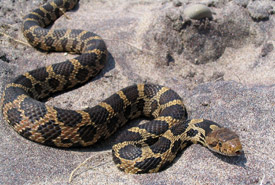
Eastern foxsnake (Photo by Ryan M. Bolton)
Although many staff and Conservation Volunteers at the Nature Conservancy of Canada (NCC) may celebrate St. Patrick’s Day, we like to keep our snakes on our lands. In fact, we’re making efforts to ensure they stay.
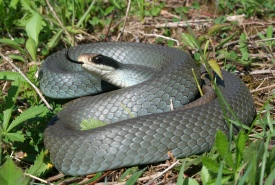
Blue racer (Photo by Joe Crowley)
Snakes are an important part of ecosystems. As middle-order predators, they keep natural environments and food webs working.
There are 26 species and populations of snakes in Canada, including the extirpated (locally extinct) timber rattlesnake. Eight of these are assessed as endangered by the Committee on the Status of Endangered Wildlife in Canada. One of these is the blue racer, a snake exclusive to Pelee Island and present on the more than one-kilometre stretch of land protected by NCC on the island.
By eradicating most of the non-native phragmites from an 800-metre stretch of shoreline on the island, NCC has recreated foraging, basking, nesting and hibernation sites for snake species present on Pelee Island, including blue racer and eastern foxsnake.
"NCC has been slowly but steadily increasing snake habitat on Pelee Island by removing invasive species, planting native species and making wetlands," says Jill Crosthwaite, NCC's conservation biology coordinator in southwestern Ontario."Our efforts were rewarded in 2017 when we found an eastern gartersnake basking at the edge of one of our newly created wetlands, only one year after it was dug! Our Pelee properties are popular with all the snake species on the island and, while it’s always exciting to spot a rarity, there’s a special sense of satisfaction when wildlife (even common species) are spotted using habitat you’ve had a hand in creating."
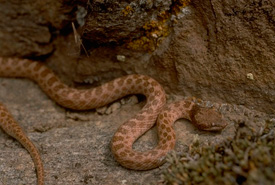
Night snake (Photo by NCC)
Snakes can be found on NCC’s many properties across Canada, except in Newfoundland and Labrador. That said, in 2010 a pregnant garter snake was found in St. David’s in southwestern Newfoundland. This species, despite being native to other Canadian regions, was considered an introduced species on the island.
For those of you who are like Indiana Jones and are afraid of snakes, you have nothing to fear. A common misconception about snakes and a reason why people develop a fear toward them is their presumed venomous bites. But in Canada, there are only four species of venomous snakes: the endangered massasauga in Ontario; the threatened western rattlesnake in southern British Columbia; the prairie rattlesnake (special concern) in southeastern Alberta and western Saskatchewan; and the endangered night snake in limited areas of southern BC.
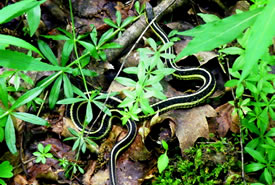
Common gartersnake (Photo by NCC)
It is important to note that snakes are more afraid of you than you are of them. Much like any species, they generally will only bite if provoked. Bites from snake species in Canada are few and far between.
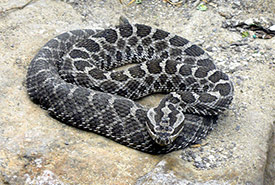
Massasauga rattlesnake (Photo by Tim Vickers)
But this misplaced fear of snakes (also known as ophidiophobia or ophiophobia) is one of the main reasons why many snakes are at risk. In addition to habitat loss and fragmentation, snakes face several human-posed risks, such as harassment and needless killing.
NCC is not only working to protect the species on our properties from coast to coast, we are also working to raise awareness about our slithery friends. So on this St. Patrick’s Day, celebrate the Irish saint with your attire, not your mindset. While sporting green, help share the importance of these not-so-scary reptiles.


